Various Discus Diseases and How to Treat Them
As with any living creature, disease can strike a discus at any time. When it does, it is important to be prepared to treat the discus and nurse it back to health. If your fish becomes diseased and you treat it early on, your fish has an improved chance of survival and responding to treatment. In this article, we will discuss different discus diseases and what you can do to help your discus get healthy again. In the final section, we will briefly describe how to prevent discus illnesses. Following these suggestions, you can have a vibrant, healthy fish who lives a long life.
INTERNAL PARASITES
Sometimes, a discus will survive with some internal parasites and not show any signs of illnesses. In these cases, the fish can go untreated. However, when the parasites grow significantly and hurt your fish, you need to treat your . Treat your fish with Flagyl, also known as Metronidazole, and increase the water temperature and ventilation. The best results possible are obtained when the water’s temperature is between 86°F and 92°F.

Discus with Tapeworms
If the discus is still eating its food, you may also try feeding the fish medicated food. Simply soak its favorite food in about 200 mL (just under one cup) of water and 10 mL of Flagyl for about an hour. Then, over the course of ten days, feed your fish the medicated food about every two to three days.
However, if the fish has stopped eating, consuming medicated food on its own will not be an option. Instead, try using a needleless syringe to place the medicated food into your discus’ mouth. To feed your fish this way, you will need to put your discus on a wet towel outside the tank, and the fish will likely reject some of the food, but this procedure gives it the best chance for survival.
GILL FLUKE
Gill flukes can ruin the fish’s gills and also result in it swimming unpredictably or breathing extremely heavily. In some cases, the infected fish might become paralyzed, landing itself at the bottom of the tank. In other cases, the complete opposite may occur, and your fish may become raging. Another sign of gill flukes is that the discus may rub its side against materials such as PVC piping. To treat gill flukes, use formalin, an anti-bacterial chemical solution.
Discus with Gill Fluke
HOLE-IN-THE-HEAD
If your fish has been noticeably motionless and stagnant or appears to have a small, pinhole-sized growth near its eyes or mouth, it has likely developed hole-in-the-head and should be treated right away. If left untreated, this condition can be fatal for your fish.
Discus with Hole-In-the-Head
Treatment solutions include formalin, Potassium Permanganate, or fluke tabs. Continue to repeat treatment for approximately two to four weeks.
PREVENTION
Key components to caring for your discus include keeping a clean tank, setting the tank’s water temperature at the appropriate level, and always giving your fish clean, high-quality food. If illnesses do occur, treat your fish quickly and carefully.
A Healthy Red Spotted Leopard Snakeskin Discus
QUESTIONS
- What are common symptoms of gill flukes?
- What do you think are the most important factors to keeping a healthy discus?
- How will you keep your discus healthy and prevent it from getting sick?
- What other Learning Center articles do you want to check out so that you can learn more about how to keep your discus healthy?

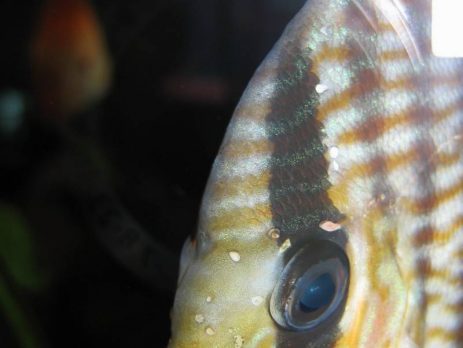
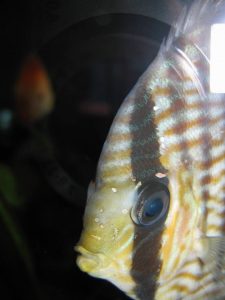



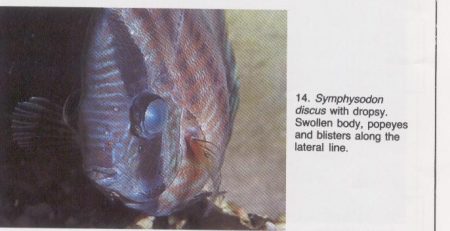
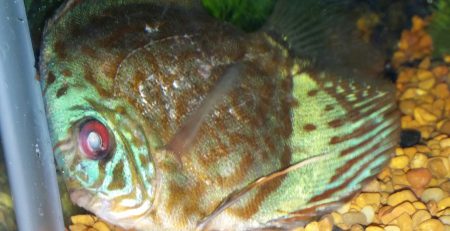
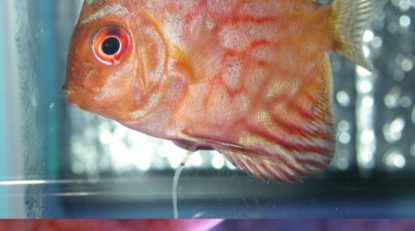
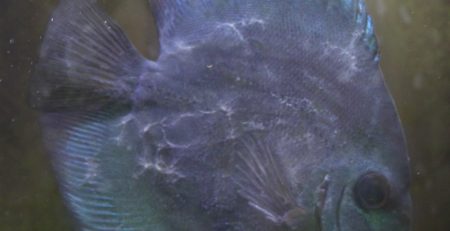

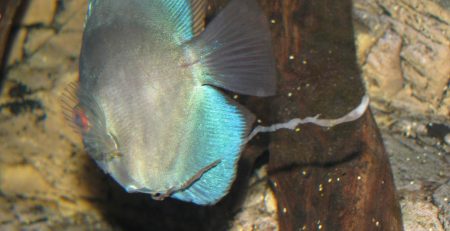
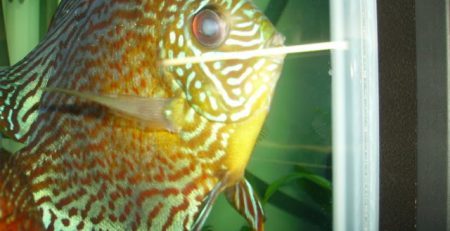

Leave a Reply
You must be logged in to post a comment.